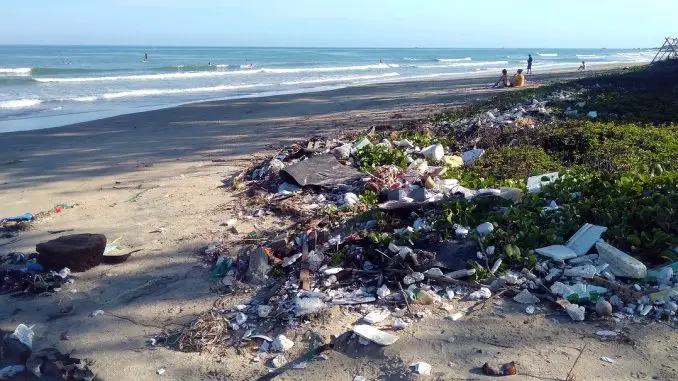
Much of the plastic we humans use ends up in the ocean. According to the latest estimate, there are a total of 269,000 tonnes floating around the world ocean. The plastic is harmful to fish and other animals living in the seas.
This involves a total of five trillion plastic particles, most of them from packaging and clothing, which for various reasons have ended up in the seas.
There, larger objects can damage wildlife by e.g. throttling, but the small plastic fragments are at least as dangerous. These are eaten by fish, which in turn are eaten by larger animals, and in this way, they accumulate higher and higher up in the food chain. And it’s not just the plastic itself that gets into the fishermen’s stomachs. Plastic also attracts other types of contaminants into the water, which accompanies the colorful pieces into the animal’s digestion.
The plastic is also not evenly spread over the oceans. The five major ocean currents in the world oceans, where strong currents rotate, are also places where plastic is collected. In the Pacific, there is an area large like the US state of Texas (696,000 km2), which can be described as a plastic soup. According to Julia Reisser at the University of Western Australia, more plastic than living organisms is obtained when trawling a net in these areas.
If the plastic stayed in the areas created by the ocean currents it would still be a problem, but maybe a little more manageable. But the fact is that these plastic swirls act as mills, which grind down the plastic that has accumulated into smaller parts. In the end, these parts are so small that they are spread by the streams, and are absorbed into the ecosystem by different organisms. The amount of plastic in the seas will probably increase if measures are not taken. Today, only five percent of plastic is recycled in the world.
Plastic bags
To solve the problem, several things need to be done. Anna Kärrman, who is researching the impact of plastic materials on marine life, tells Svenska Dagbladet that recycling of plastics must increase significantly. In Germany, there is a law that states that producers are responsible for the waste they produce, for example when it comes to packaging for electronics products. Within the EU, work is underway to reduce the amount of plastic bags, which pose a serious threat to marine mammals and birds.
Stormbirds, which are related to the albatross, are particularly affected. According to a recent study, 95 percent of all birds of these species (Northern and Southern Storm Birds) have dangerous plastic materials in their stomachs.
Every minute, one million plastic bags are used in the world, and on average a bag is used for only 15 minutes, which is a waste that has major consequences. By 2020, 5 billion plastic bags are expected to be dumped. However, there are already great differences between different EU countries today.
In Poland and Slovakia, an average of 466 plastic bags is used per person per year, while the corresponding figure in Denmark is only 4. More and more countries are now legislating on the price of plastic bags, to reduce their overuse. Hopefully, this will be felt in the seas, though it will take time, and must be combined with measures to take care of the plastic debris that is already floating around.
Leave a Reply